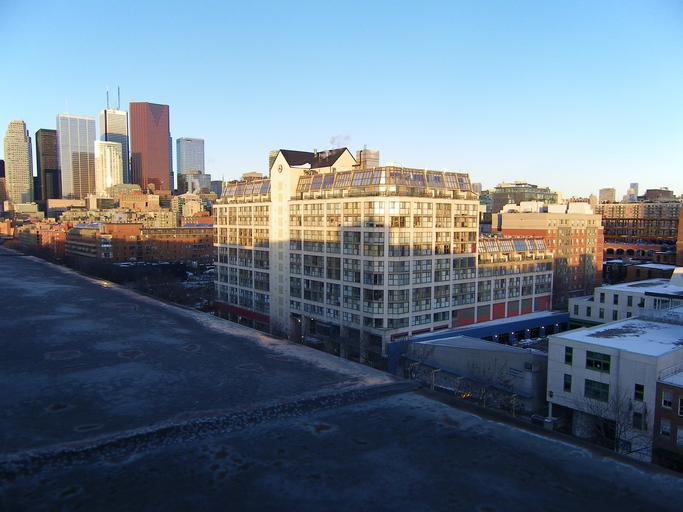Introduction
In an era where our living spaces reflect our identities, the interplay between interior design and artistic expression has never been more pronounced. A well-designed home doesn't just serve as a physical shelter; it embodies our tastes, aspirations, and emotions. This article dives deep into how to find harmony between these two realms, exploring various techniques and styles that can breathe life into your home while allowing for personal expression through art.
Finding Balance Between Interior Design and Artistic Expression
When tackling the challenge of merging interior design with artistic expression, one must first acknowledge the importance of both elements in creating a cohesive living space. Interior design focuses on the functional aspects of a room: the layout, colors, furniture selection, and overall aesthetic. On the other hand, artistic expression is about conveying emotions, thoughts, and individual narratives through various art forms.
Understanding Aesthetic Photography in Interior Spaces
What is Aesthetic Photography?
Aesthetic photography involves capturing images that are visually pleasing and evoke emotional responses. When integrated into interior design, aesthetic photography can enhance home decor by providing visual focal points.

Incorporating Aesthetic Photography in Home Decor
Framed Photography: Select high-quality prints that resonate with your personality. Gallery Wall Inspiration: Create a dynamic display by combining various sizes and styles of frames. Photography Exhibits at Home: Dedicate a wall or corner for rotating exhibitions of your favorite photographs.Self-Portrait Photography as Personal Narrative
The Role of Self-Portrait Photography
Self-portrait photography allows individuals to express their identities through visual storytelling. Displaying these portraits in your home can evoke self-reflection and connect you to your space on a deeper level.

Creative Display Techniques for Self-Portraits
- Use large canvases to create striking statements. Experiment with different portrait styles such as faceless portraits or colorful portraits that represent different facets of your identity.
Exploring Contemplative Photography
What is Contemplative Photography?
Contemplative photography encourages mindfulness while capturing images. This technique emphasizes being present in the moment rather than merely aiming for visually striking compositions.
Implementing Contemplative Photography in Your Space
- Choose serene nature-inspired art pieces that inspire tranquility. Create cozy reading nooks adorned with contemplative photographs to encourage reflection.
Self-Expression in Art Through Diverse Styles
Different Portrait Styles for Expression
The medium you choose greatly affects how you express yourself artistically within your home’s design framework. Whether it’s abstract portraits or fine art photography, each style tells a unique story.
Merging Artistic Choices with Interior Design
Select pieces that complement your color palette in design. Consider using decorative art prints that resonate with both personal taste and contemporary trends.The Importance of Identity in Art
How Art Reflects Identity
Art serves as an extension of one’s identity; it’s not just about aesthetics but also about communicating who we are.
Enhancing Identity Through Personalized Art Displays
- Curate eclectic art collections that portray varying aspects of your personality. Use custom wall art to make bold statements about who you are.
Art Techniques That Enhance Home Aesthetics
The techniques used in creating art can influence how it fits within your interior space:
Linocut Printing Techniques: Perfect for adding texture to walls. Woodblock Printing Techniques: Can provide an organic feel to decorative pieces. Explore innovative art techniques like abstract wall art to add modern flair without overwhelming existing decor.Emotional Reflection in Art Through Color Palette
Exploring Emotional Responses to Color
Colors evoke emotions; understanding this can help you select artwork that complements both your emotional state and the room's purpose.
Using Colorful Portraits to Enhance Mood
Incorporate vibrant color compositions through colorful portraits that uplift spirits or calm nerves depending on their placement within the home.
Artistic Choices: Decorative Elements Beyond Paintings
While paintings often take center stage, other elements deserve attention:
Sculptures Textiles Mixed media installations Large canvases Thought-provoking imageryBy diversifying artistic choices, homeowners create spaces rich with depth and interest while staying true to personal tastes.

Capturing Moments in Photography: An Ongoing Journey
Photography is not static; it's about capturing fleeting moments—every click tells a story worth sharing within a living space.
Integrating Captured Moments into Home Decor
Use framed photography or wall art photography as reminders of cherished experiences, ensuring they harmonize with overall interior themes without overpowering them aesthetically.
Everyday Spaces in Art: Making Functional Areas Beautiful
Art needn't be confined to designated areas; it can elevate everyday spaces like kitchens or bathrooms!
Brighten dull spaces with decorative prints. Employ minimalist decor principles—less is often more when integrating artistic elements into functional areas.Visual Storytelling Through Wall Art Photography
Wall art photography provides an opportunity for narrative-driven displays:
Choose thematic series that communicate specific stories or concepts. Create timelines through photo essays displayed throughout hallways or common areas—inviting guests into an ongoing narrative woven throughout your home.FAQs About Finding Balance Between Interior Design and Artistic Expression
Q1: How do I choose artwork that suits my interior design style?
A: Start by identifying the primary colors and textures already present in your space; then look for artwork that incorporates those elements seamlessly while enhancing mood or storytelling components you've chosen!
Q2: Can I mix different artistic styles within my interior?
A: Absolutely! Mixing styles can create a dynamic environment but aim for cohesion by maintaining a consistent color palette across various pieces!
Q3: What role does lighting play in displaying artwork?
A: Lighting significantly impacts how colors appear—consider spotlights or natural light sources when arranging artworks so they shine beautifully without harsh shadows!
Q4: Is it necessary to frame every piece of artwork?
https://privatebin.net/?d381bb0a2d3e10e9#3qwnr3ruvHviFmZe73roo2mZ1MyAwnYDBGJeGkeDwK2m A: No! While framing adds polish, unframed works like canvas paintings offer an informal charm—choose based on desired aesthetic impact!
Q5: How do I maintain balance between functionality and artistry?
A: Prioritize essential functions first (like seating arrangements) before introducing artistic elements—it ensures practicality remains intact while still showcasing individuality!
Q6: What's the best way to update my home decor seasonally using art?
A: Rotate artworks based on seasonal themes—use warmer tones during fall/winter months while opting for vibrant hues/summery landscapes when spring/summer arrives!
Conclusion
Finding balance between interior design and artistic expression is not just about aesthetics; it's about crafting spaces where we feel most at home—a sanctuary filled with meaning resonating from every piece we choose to display! By thoughtfully integrating various forms of art into our living environments—from aesthetic photography reflecting our personalities through self-expression—to thoughtful considerations regarding color palettes—we create harmonious sanctuaries uniquely ours! So go ahead—explore new techniques today & discover how finding balance enriches not only homes but lives too!